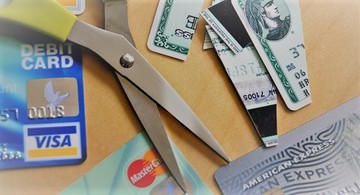
As one of the two largest card payment networks in the US, the role of Visa is to process payments between banks and merchants (e.g. retailers). Visa makes a profit from charging service fees and taking a cut of the merchant's purchase price. Institutions that issue Visa cards receive a portion of the merchant's transaction fees. In turn, issuing institutions often offer rewards for card holder activity, usually in proportion to how much they spend. This means those with the most money have the most room to benefit.
Today, we are seeing rapid technological disruption changing the traditional banking and payment landscape and giving rise to alternative payment methods and networks. This may mean some exciting changes are coming, especially for those with middle-to-lower income who have historically lacked access to many financial services (e.g. not having a bank or paying a disproportionate amount in fees) and products such as Visa credit cards. How do YOU think a new payment network could leverage today's technology to connect financial institutions, merchants, and individuals in a way that's income-level-inclusive and cost-effective?
We are interested in designing an alternative payment method to Visa in the United States. Specifically, answer the following:
- In a big picture sense, what is your concept for a payment network that could essentially fill the role of the Visa payment network? Explain how it would connect and move money between financial institutions, merchants, and individuals.
- From the individual perspective, what would the experience of using your payment network look like? What digital or physical interfaces or payment vehicles would you use? For example, you wouldn't be paying with a Visa credit card, so what do you use instead?
BONUS: Explain how your idea would be an improvement over the Visa network in terms of it's accessibility to those who may not have a bank or qualify for some traditional financial services.
Considerations: We know this is a complex topic, but keep in mind the key idea is to suggest a concept for a new network that will move money at a much lower cost. It will ideally enable people and businesses (especially lower income individuals and small businesses!) to make transactions without paying a large amount to networks like Visa. If you're looking for inspiration, consider some of the alternative networks already at play in China (Alipay and WeChat) or the untapped possibilities of blockchain technology.
-
Submissions will be graded on the following criteria:
- Meets Deliverables
- Creativity
- Clarity
will receive $200 each
| $200.00 |

|
Umaseh Sivanesan McMaster University | |
| $200.00 |

|
Matthew Gaiser Queen's University | |
| $200.00 |

|
Shriram Mandale Shivaji University | |
| $200.00 |

|
Bala Durage Sandamal Siripathi University of Moratuwa, Sri Lanka | |
| $200.00 |
|
Jasper Samuel University College Dublin | |
| $200.00 |

|
Gerald Okafor University of Manchester | |
| $200.00 |

|
Betty Hills Carnegie Mellon University | |
| $200.00 |

|
Lweendo Muntanga University of Central Florida |
